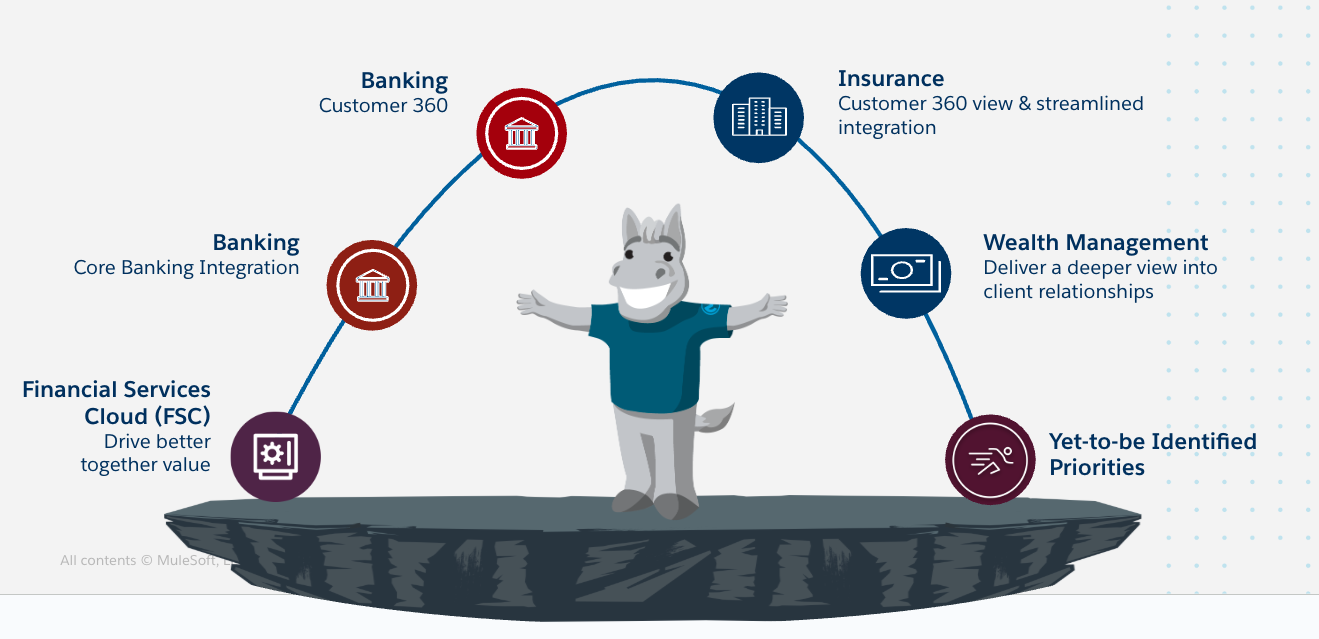Financial Services Integration
Overview
MuleSoft provides powerful integration solutions for the financial services industry, enabling seamless connectivity between core banking systems, payment processors, and regulatory platforms.

Key Solutions
Core Banking Integration
- Real-time account data synchronization
- Transaction processing and reconciliation
- Customer information management
- Multi-channel banking support
Payment Processing
- Payment gateway integration
- Real-time transaction processing
- Fraud detection and prevention
- Payment status tracking
Regulatory Compliance
- Automated reporting to regulatory bodies
- Audit trail maintenance
- Data privacy and security
- Compliance monitoring
Customer Experience
- 360-degree customer view
- Personalized banking services
- Omnichannel customer support
- Digital onboarding
Integration Patterns
API-Led Connectivity
- System APIs for core banking systems
- Process APIs for business logic
- Experience APIs for customer-facing applications
- Reusable integration assets
Event-Driven Architecture
- Real-time transaction processing
- Event-based notifications
- Asynchronous workflows
- Message queuing
Batch Processing
- End-of-day reconciliation
- Bulk data processing
- Scheduled reporting
- Data archival
Security and Compliance
Data Protection
- End-to-end encryption
- Tokenization of sensitive data
- Secure data transmission
- Access control and authentication
Regulatory Requirements
- GDPR compliance
- PCI DSS standards
- SOX compliance
- Anti-money laundering (AML)
Audit and Monitoring
- Comprehensive logging
- Real-time monitoring
- Alert mechanisms
- Compliance reporting
Best Practices
-
Security First
- Implement robust encryption
- Regular security audits
- Access control management
- Data privacy compliance
-
Performance Optimization
- Caching strategies
- Load balancing
- Resource optimization
- Scalability planning
-
Error Handling
- Comprehensive error logging
- Automated recovery
- Alert mechanisms
- Incident response
-
Maintenance
- Regular system updates
- Performance monitoring
- Capacity planning
- Documentation